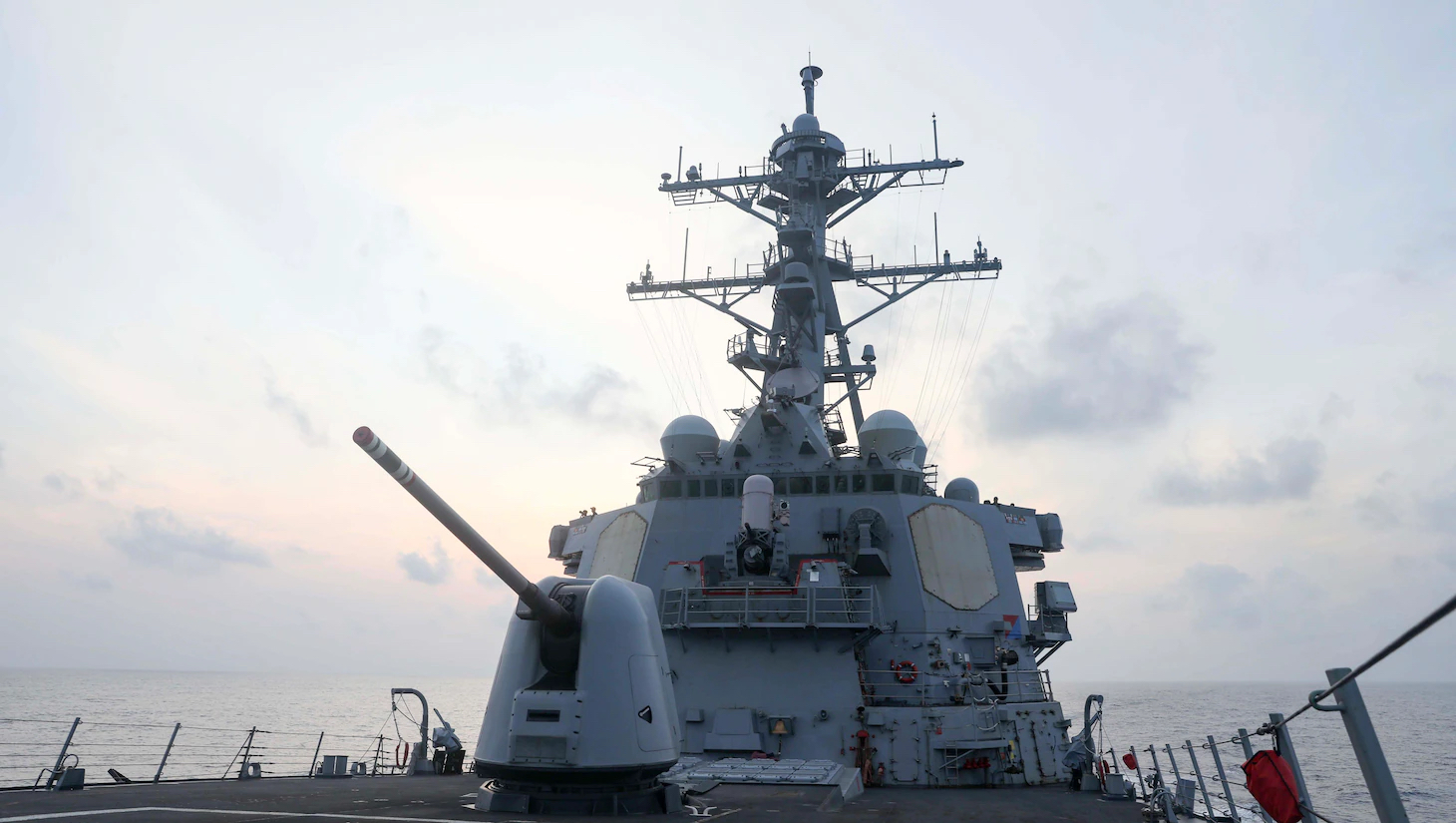
Both a U.S. and a Chinese carrier strike group are operating near Taiwan as political tensions continue to simmer following a Taiwanese presidential meeting with U.S. House Speaker Kevin McCarthy (R-Calif.), USNI News has learned.
On Monday, the Nimitz Carrier Strike Group was operating in the vicinity of Taiwan in the Philippine Sea, according to the USNI News Fleet and Marine Tracker.
USS Nimitz (CVN-68) is also operating in the Philippine Sea following a series of exercises with Japanese and Koreans with Exercise Ssang 2023.
“We will not be deterred from operating safely and responsibly in the sea and skies of the Western Pacific consistent with international law, and in keeping with that the Nimitz carrier strike group and a Marine Amphibious Readiness Group continue to conduct routine operations in the Philippine Sea and will remain in the region,” Chris Meagher, assistant to the secretary of defense for public affairs, told reporters Monday.
The Shandong Carrier Strike Group launched 80 J-15 Flying Shark fighter missions from Friday through Sunday from People’s Liberation Army Navy carrier CNS Shandong (17), according to Japanese officials. Shandong transited the Bashi Channel Wednesday and has since been operating off of Taiwan’s east coast, USNI News previously reported.

Two defense officials told USNI News on Monday there have been no reported unsafe interactions between U.S. and fighters from Shandong.
The Shandong CSG was part of Eastern Theatre Command’s Joint Sword drills, which began Saturday and ended on Monday. The drills launched after Taiwan’s President Tsai Ing-wen returned from a U.S. visit which included meeting McCarthy in California. Ground, naval and air elements of all three arms of the PLA simulated carrying out strikes and a blockade of Taiwan during the drills.
As of Monday, there were 12 PLAN warships and more than 90 aircraft operating in the vicinity of Taiwan, according to officials in Taipei.
Taiwan security officials tracked at least four J-15 missions that entered Taiwan’s Air Defense Identification Zone over the weekend, a first for simulating attacks from the east of the island.
The fighters from Shandong had “carried out multiple waves of simulated strikes on important targets,” Chinese officials said in a Monday statement.
In addition to releasing the location and composition of the Shandong CSG from Friday through Sunday, the Joint Staff Office of Japan’s Ministry of Defense also said 80 fighter launches and recovery and 40 helicopter take-offs and landings were conducted by the CSG, according to a Monday statement. Japan Air Self Defense Force fighter aircraft were scrambled in response to the fighter launches. The release also stated that destroyers JS Sawagiri (DD-157) and JS Sazanami (DD-113) shadowed the PLAN CSG.
The location and composition of the Shandong CSG from the release is as follows:
| Date and Time | Location | Composition |
| Friday April 7
Around 8pm |
390km south of Miyako Island | carrier CNS Shandong (17) destroyer CNS Jiaozuo (163) frigate CNS Liuzhou (573) fleet oiler CNS Chaganhu (905) |
| Saturday April 8 Around 8pm |
430km south of Miyako Island | carrier Shandong destroyer Jiaozuo frigates CNS Xuchang (536) and Liuzhou fleet oiler Chaganhu |
| Sunday April 9 Around 8pm |
230km south of Miyako Island | carrier Shandong destroyer Jiaozuo frigates Xuchang and Liuzhou fleet oiler Chaganhu |
Meanwhile, a U.S. guided-missile destroyer sailed past a Chinese artificial island in the South China Sea drawing the ire of Beijing.
USS Milius (DDG-69) conducted its second freedom of navigation operation near the Spratly Islands in the South China Sea in less than a month, further irking the Chinese Communist Party.
Milius conducted the freedom of navigation operation (FONOP) Monday morning, according to a U.S. 7th Fleet release. China, which protested Milius’s transit last month, sent maritime and air assets to monitor the destroyer, according to a Chinese statement.
China claims it has sovereignty over the Spratly Islands and the waters around them, while the United States says those waters are international and can be transited freely.

“This freedom of navigation operation (“FONOP”) upheld the rights, freedoms, and lawful uses of the sea,” according to the U.S. 7th Fleet statement. “USS Milius demonstrated that Mischief Reef, a low-tide elevation in it its natural state, is not entitled to a territorial sea under international law.”
During Milius’s last FONOP, it sailed near the Parcel Islands and then into the South China Sea, USNI News previously reported. China claimed it chased away the U.S. warship.





